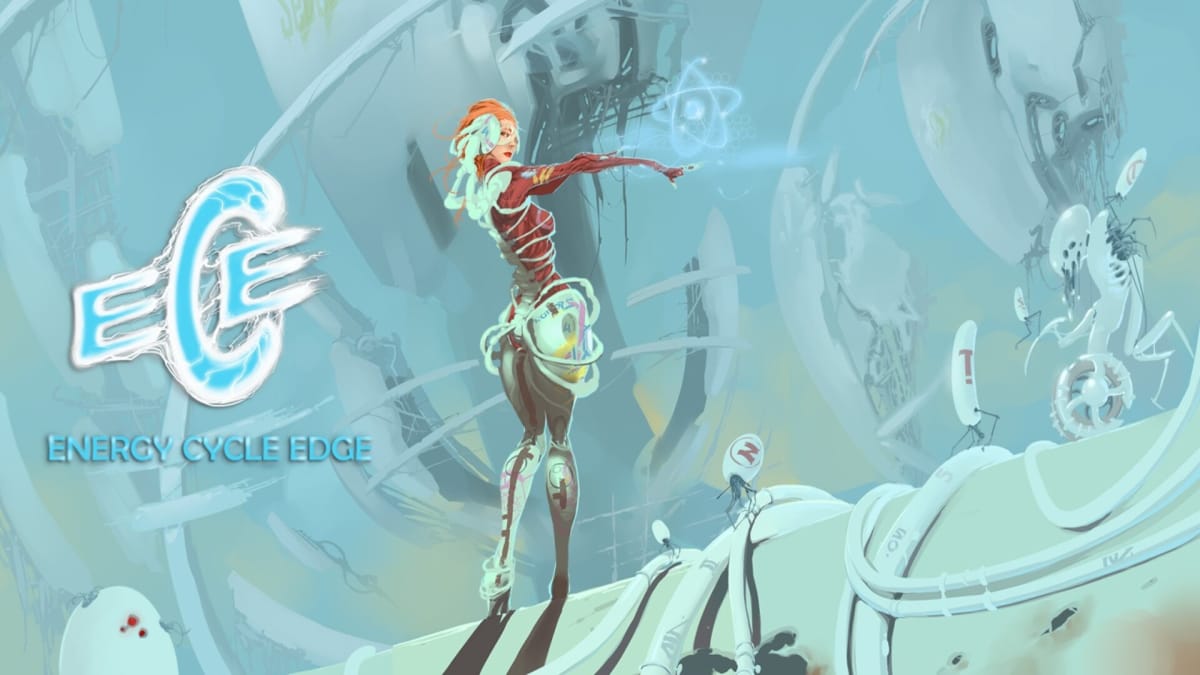I'll admit: I wasn't kind to Sometimes You's Energy Cycle. Even by the diminished standards this developer/publisher set for itself, its puzzle ambitions went nowhere. But the great thing about sequels is the potential for improvement; revisiting the nasty mishaps and building upon ideas. Seeing such enthusiasm from a budget-constrained indie team is enough for me to wish them the best. So, how did the actual game turn out? Despite s-ohm frustrations, Energy Cycle Edge accomplishes more with its modest goals.
If you haven't played the original, Edge is a puzzle game about matching all floating energy orbs to the same color. The default colors are red, light blue, and green. The tricky part is every click made (A button) cycles each connected orb to the next color in the rotation. For example: hitting the singular sphere that connects both sides of an uppercase-L will change each one, while clicking either end only color-shifts that respective side. Now take that 2D concept and expand the potential to 3D. Now you need to consider changing colors within linked layers.
Amplified Improvements
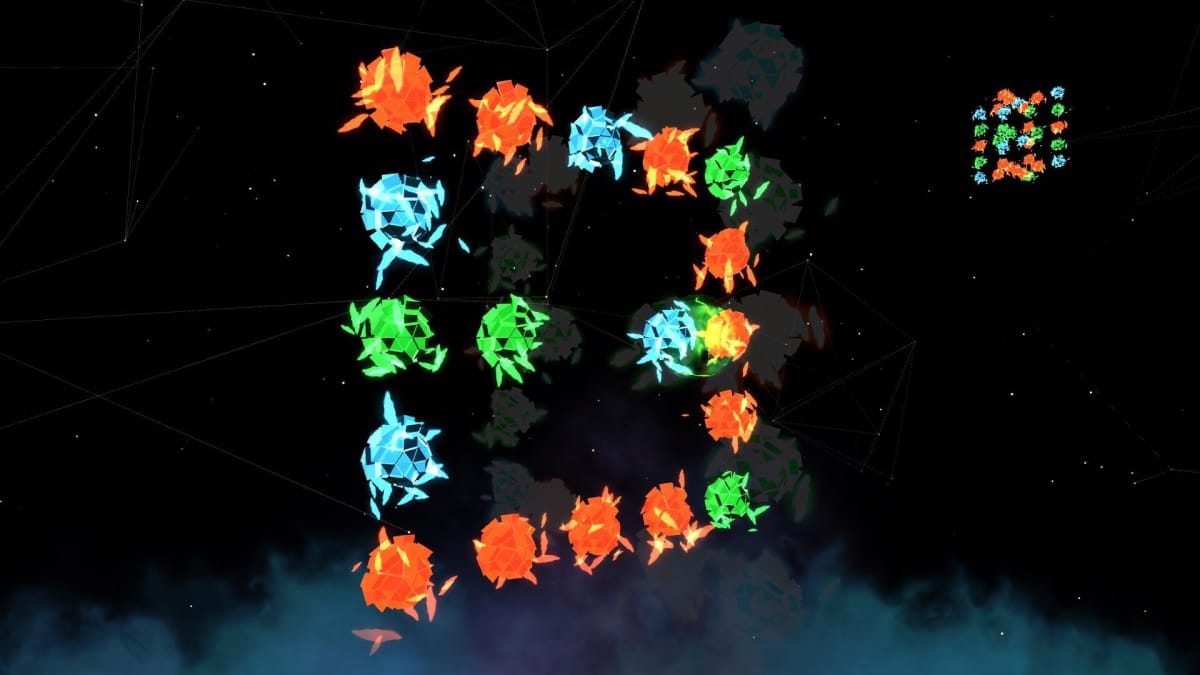
Before getting into the mechanical main course, the quality-of-life (QoL) polishes deserve recognition. For starters, simply making the three standard colors look starkly different was a fine improvement. The visual update from low-grade, wispy cotton balls of electricity to crystalline orbs lends a tactile feel to them; the noticeable cracks in each one suggest this power can barely remain stored. Although relatively basic, the improved functionality goes a long way in ensuring each click is deliberate.
During the first collection of puzzles in 2D, these polishes show Sometimes You was taking notes. When the first 3D puzzles come to life, it's tough to look at those previous ones the same way. Since I played Energy Cycle and Edge back-to-back, those same stratagems I'd previously benefitted from worked here too. After I rotated that first conundrum 90 degrees, your mind momentarily shatters. Whether it spun 90 degrees, 45 degrees, or it was a 4-sided cube, you literally need to assess each side to account for connected orbs. Old moves won't go very far.
Credit is due to building upon its predecessor's pacing too. At the halfway point of the original’s 28-puzzle campaign, routines became easier and easier to develop. Now Edge's campaign count balloons to 42 and each new idea gets enough time to flex its collective potential. Since I was fresh off the first game, maybe the plainer 2D challenges overstay their welcome; then again, getting cozy with the familiar can also be a benefit when your expectations are finally upended. Regardless of that creative choice, once that flashy new dimension arrives more a-ha! moments occur in quicker succession. The tougher brainteasers just hit different.
Some Faulty Connections
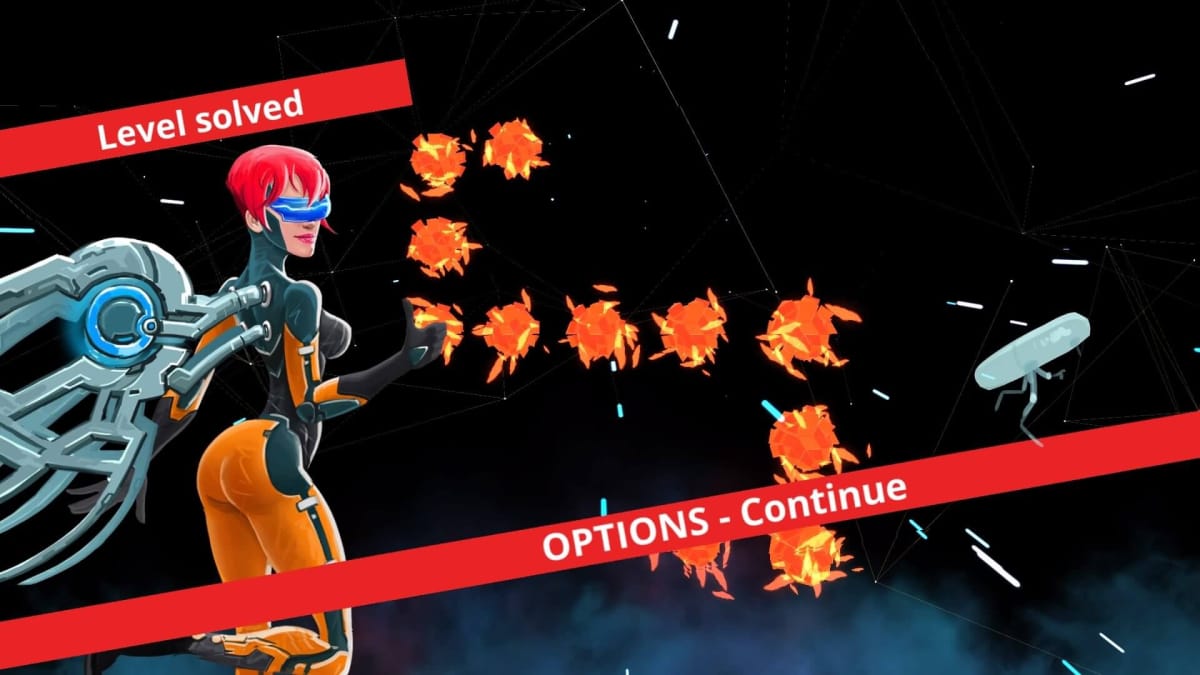
As improved as the main course is, that doesn't mean side dishes go unnoticed. For those less-prepared for these tasks, it would've helped to thoroughly tutorialize how these dynamics work in 3D. Maybe an animated diorama showing how object permanence works here. Considering how many colored spheres you're juggling in the 3D puzzles, the scaled-down geometrical guide tucked in the top-right corner is a nice help; think of those miniature models in math books and you'll know what I mean. The problem is how visually messy they can get, especially in the 45-degree category. Greater orb density looks like a glob of rotating colors to that UI guide.
It's also a real shame Edge lost the original's supplementary modes. Even though they weren't amazing to Energy Cycle, I can imagine losing myself in either option with these tougher tests. The missed potential for semi-randomized 3D puzzles in a more casual Infinite Play or stressful Time Attack cannot be understated here. The only replayability is via re-doing the campaign puzzles and beating your previous best time.
Though not fatal, these issues do dampen Edge's earnest goodwill. A revitalized skeleton for this deceptively simple concept gets disrupted by some loose wires. Since you're now relying exclusively on a campaign, it's tough to disregard annoyances.
De-light-ful Presentation Upgrades
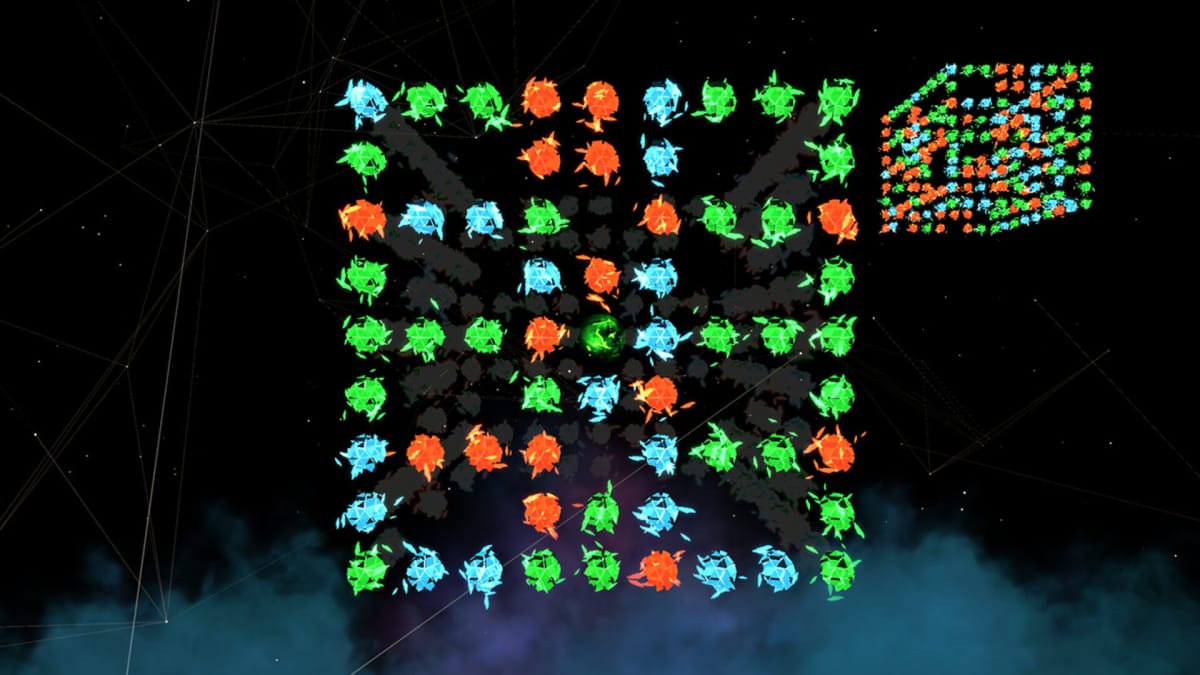
Aside from the biggest highlight I'd already mentioned, the make of these new cells, I appreciate the new 'texture' of this environment too - assisted by the next-gen upgrade. Like the previous, backgrounds still feel too empty, but Edge's robotic/geometrical design is a better fit for the puzzles in the foreground. Like before, Sometimes You still isn't sure how to marry any visual theme; that said, I'll take svelte techno pin-up girls after every solved level over random electricity cats. Miscellaneous elements, such as UI, reveal this team still doesn't have a firm grasp on aesthetics.
Fortunately, the aural experience is a different matter. They've found a better identity here by simply avoiding a bunch of obnoxious noises thrown in a blender. By sticking firmly to ambient beats and dance music, Edge's soundtrack isn't combative with the player experience. I don't want to oversell this OST as "Techno-Mozart" nor celebrate slightly crisper sound design, but at least these aspects aren’t actively antagonistic to your concentration.
Watt's Left To Say
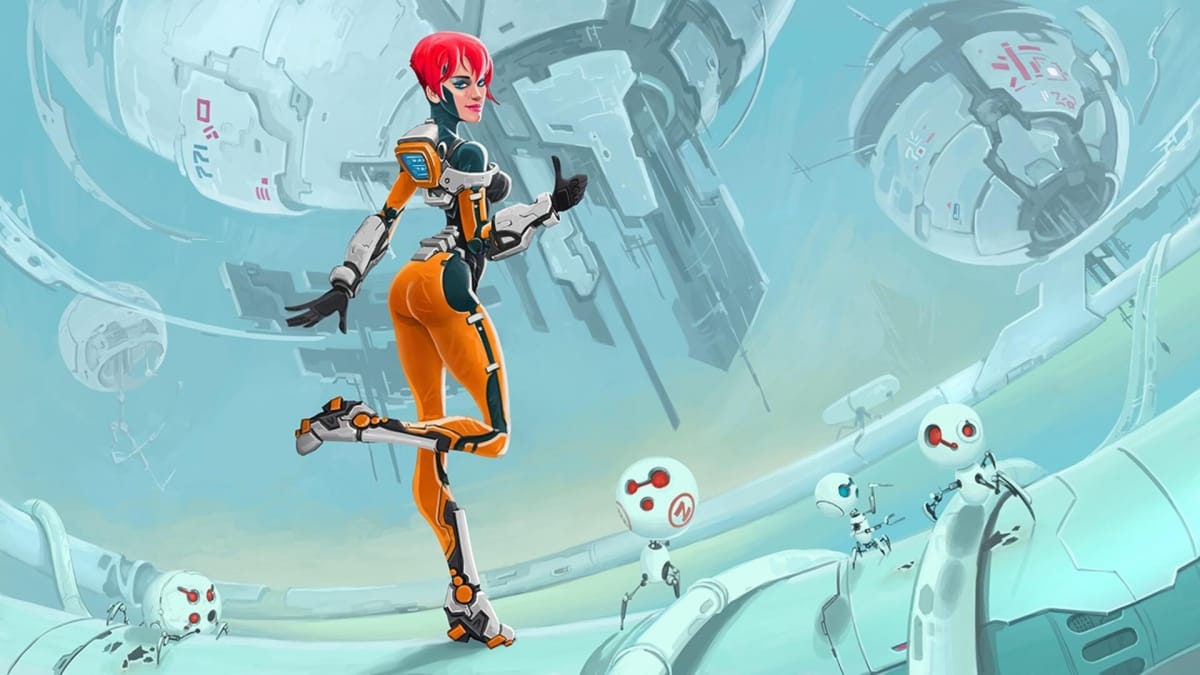
When considering all of the gimmicks and extra processing power afforded these new consoles, I like how Sometimes You's first steps into this new generation are refurbished minimalist puzzle games. Even though it's still slight, the facelift is more noticeable here thanks to its improved production values (along with a price bump to $5). But the story behind Energy Cycle Edge isn't what maintains my attention; what did was by discovering its spark. This doesn't discount annoying fumbles and mysteriously absent modes, but there's now a tangible foundation should this series move forward.
TechRaptor reviewed Energy Cycle Edge on Xbox Series X with a copy provided by the publisher/developer. It is also available on PlayStation 5, PlayStation 4, PlayStation Vita, Xbox One, & Nintendo Switch.
Review Summary
Pros
- New Dimension Improves Puzzle Design
- Solid Techno-Themed Soundtrack
- Better Pacing
Cons
- Some Supplementary Gameplay Issues
- Missing Extra Modes From Original
- Still A Slightly Confused Visual Theme
Have a tip, or want to point out something we missed? Leave a Comment or e-mail us at tips@techraptor.net
